Ubuntu 23.10 has been available since October 12, 2023. Would you like to use it and benefit from its new features? In this tutorial, we’ll look at how to install Ubuntu 23.10 on VirtualBox. This allows you to immerse yourself in the rich and diverse world of this Linux OS, while operating in a secure virtual space isolated from your main operating system.
Step 1: Preparing the environment
Before diving into the installation of Ubuntu 23.10 in a virtual machine, it’s essential to prepare your environment to ensure a smooth and optimized installation.
Here are the initial steps to prepare your system and VirtualBox:
- Visit the official VirtualBox website and download the latest version of the virtualization software for your operating system.
- Install VirtualBox by following the installation program’s instructions, and launch the application once installation is complete.
- Make sure virtualization is enabled in your computer’s BIOS/UEFI settings.
- Check that your system has enough RAM memory and disk space to host the virtual machine. At least 2 GB RAM and 25 GB disk space are recommended for Ubuntu.
Step 2: Download the Ubuntu 23.10 Image
Now that your virtualization environment is ready, let’s download the Ubuntu 23.10 ISO image.
Open your web browser and go to the official Ubuntu download site.
Although the site may default to the latest stable version. So be sure to select Ubuntu 23.10 specifically if several versions are available.
If you’re interested in another Ubuntu variant (e.g. Ubuntu Server), you can go to the corresponding download page by browsing through the site.
Step 3: Creating a Virtual Machine
After preparing the virtualization environment and downloading the Ubuntu 23.10 ISO image, the next step is to create a virtual machine (VM) on VirtualBox.
The VM will be the host of your Ubuntu installation and it’s through it that you’ll interact with the operating system.
Read also: How to install Ubuntu 23.04 Lunar Lobster?
So here’s how to do it:
Open VirtualBox and click on the New button in the top left-hand corner to start the process of creating a new virtual machine.
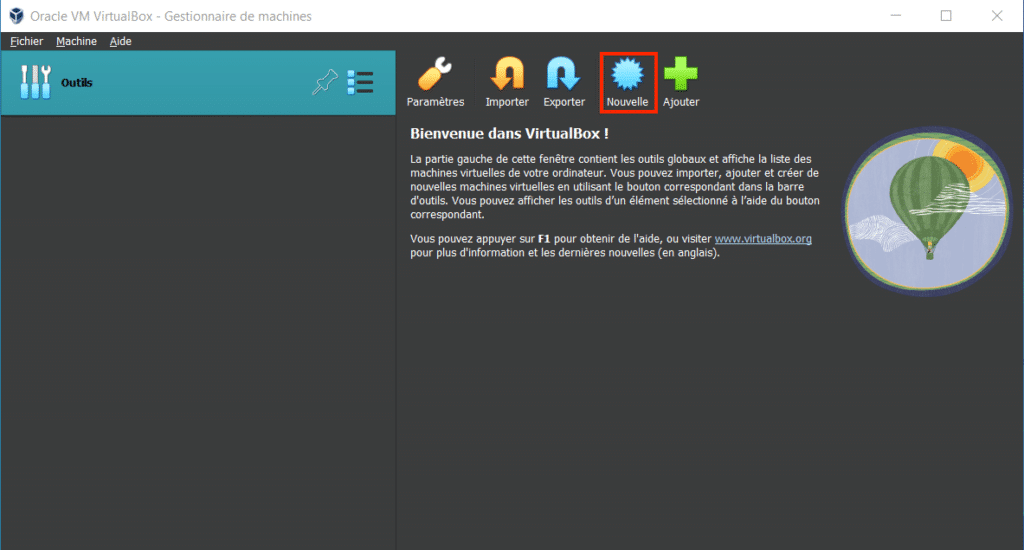
In the window that appears, enter a name for your VM.
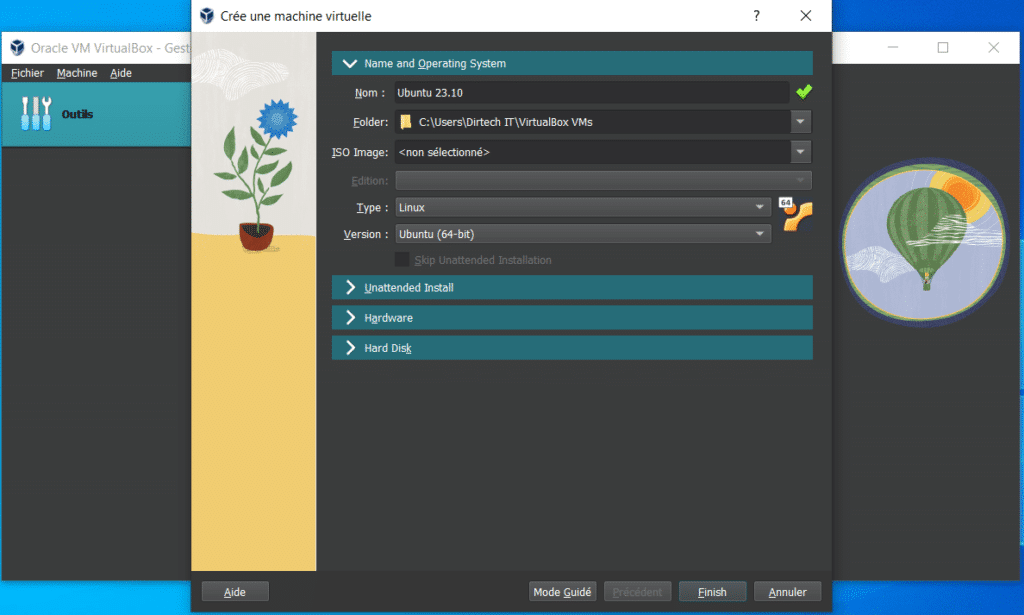
Allocate a certain amount of RAM memory to the VM. The minimum amount recommended for Ubuntu 23.10 is 2 GB (2048 MB), but you may wish to allocate more if your system allows.
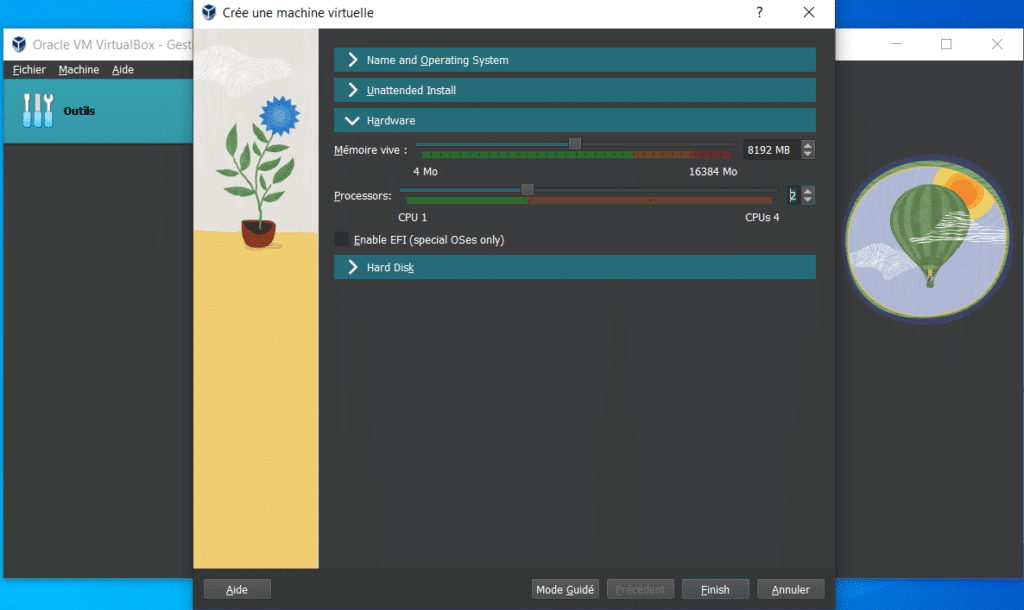
Then go to configuration to set up the network. Select bridge access, then Ok.
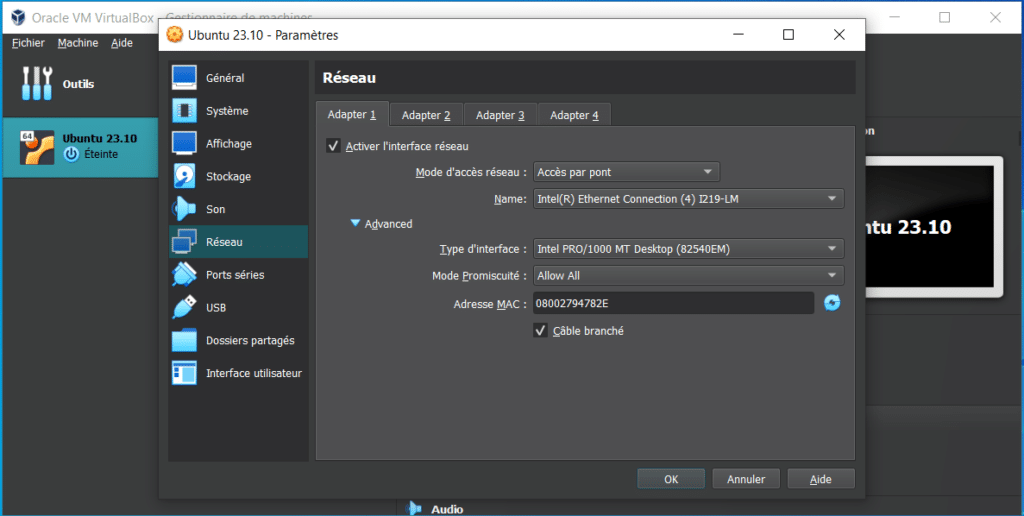
Click on “Start” to launch your VM. VirtualBox should open a new window and boot from the Ubuntu ISO, guiding you through the Ubuntu installation process, which we’ll explore in the next step.
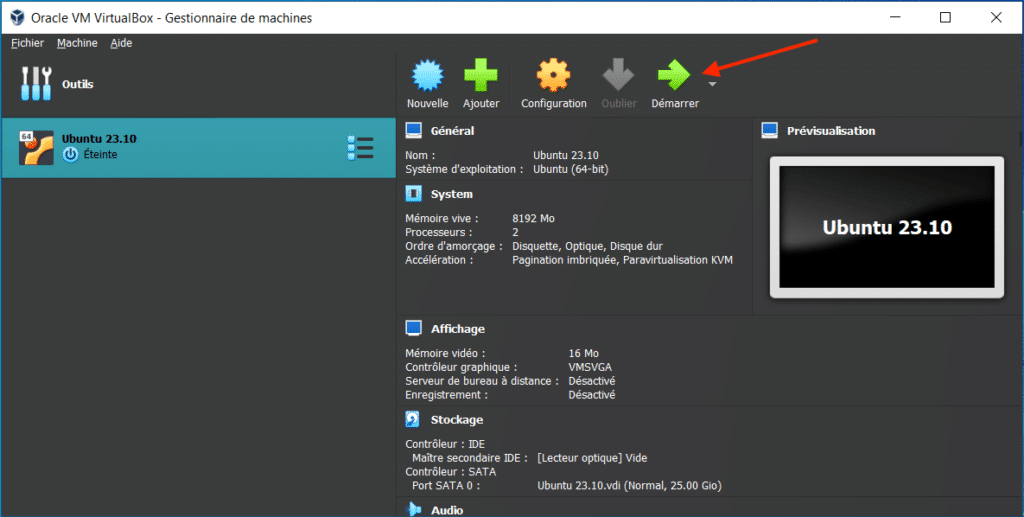
Step 4: Install Ubuntu 23.10
Now that your virtual machine is configured and ready, let’s install Ubuntu 23.10.
If you haven’t already done so, launch the virtual machine by selecting your VM and clicking on “Start” in VirtualBox.
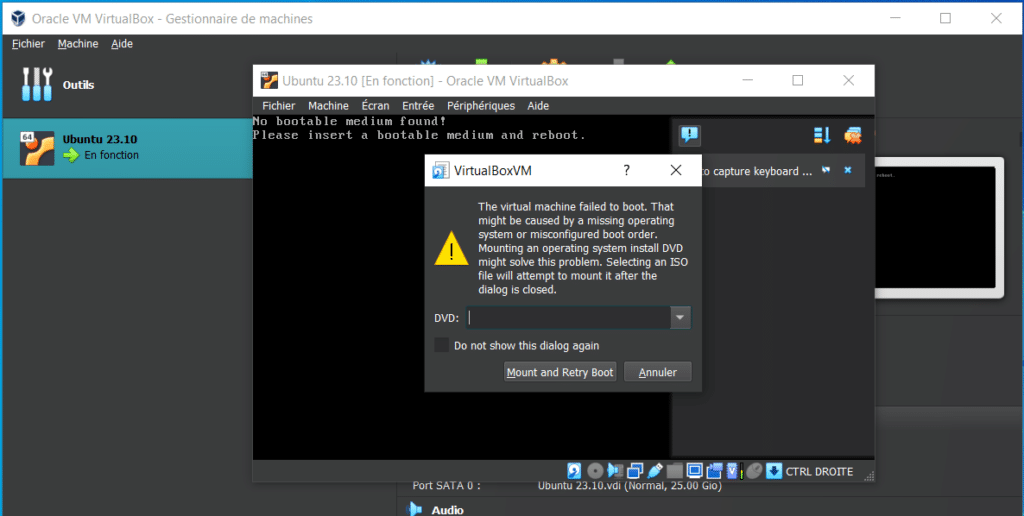
Select the Ubuntu ISO you have downloaded.
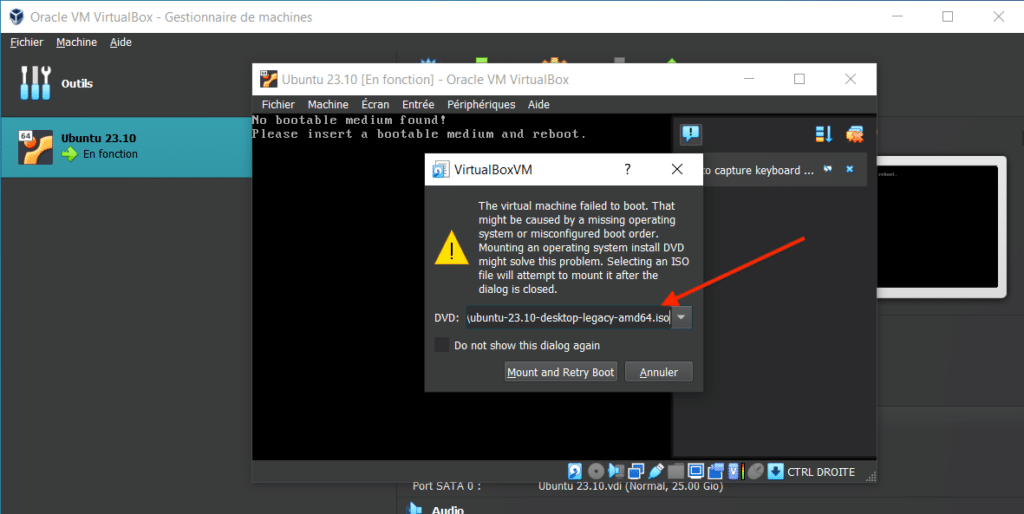
Then click on Moun and Retry Boot.
Select Try or Install Ubuntu to begin installation.
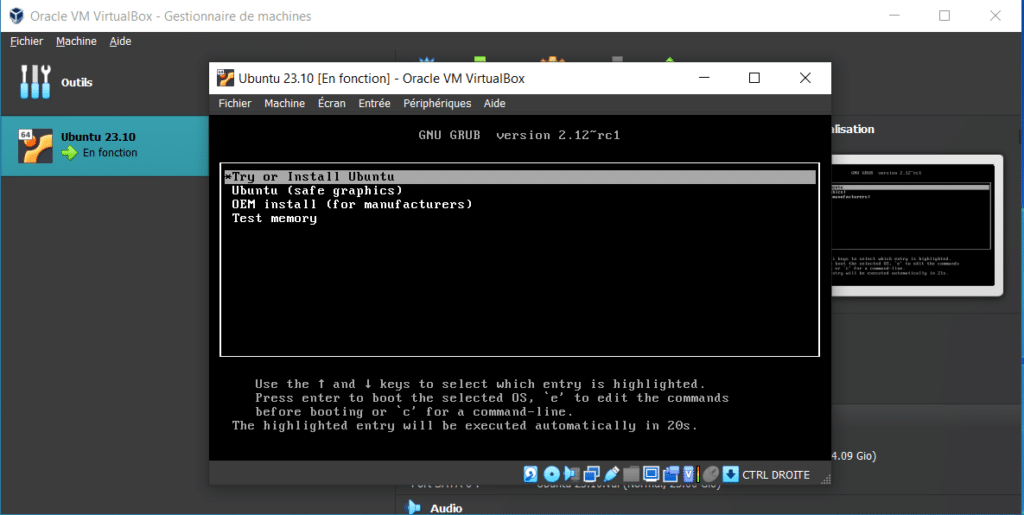
Installation begins…
Select your preferred language, then “Install Ubuntu” and choose your preferred language.
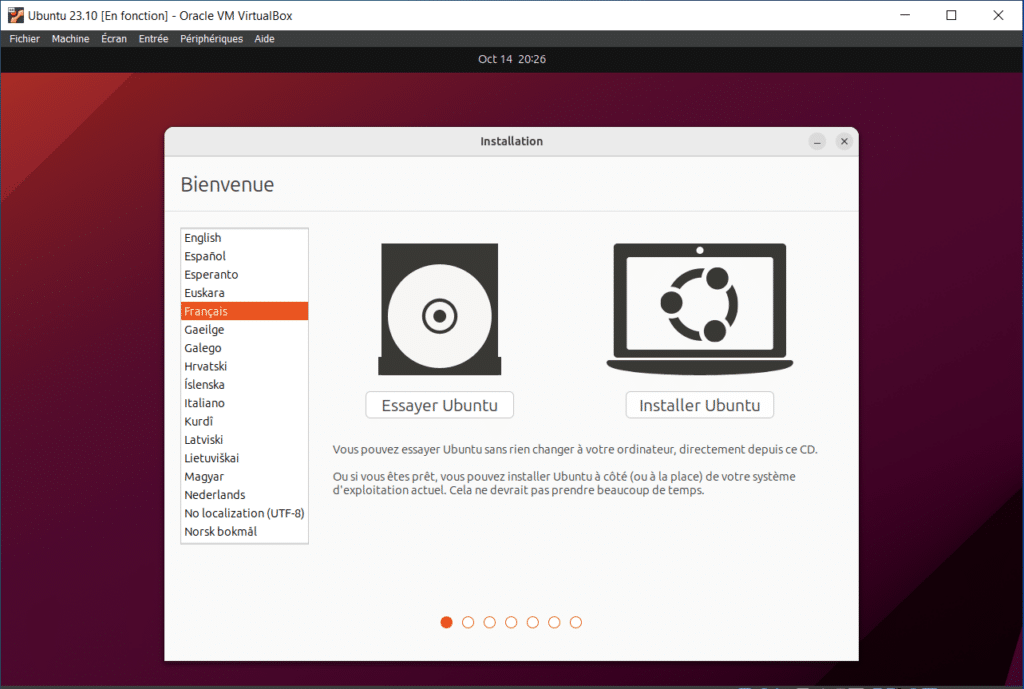
Select your keyboard layout. You can also test the keyboard layout in the text field provided.
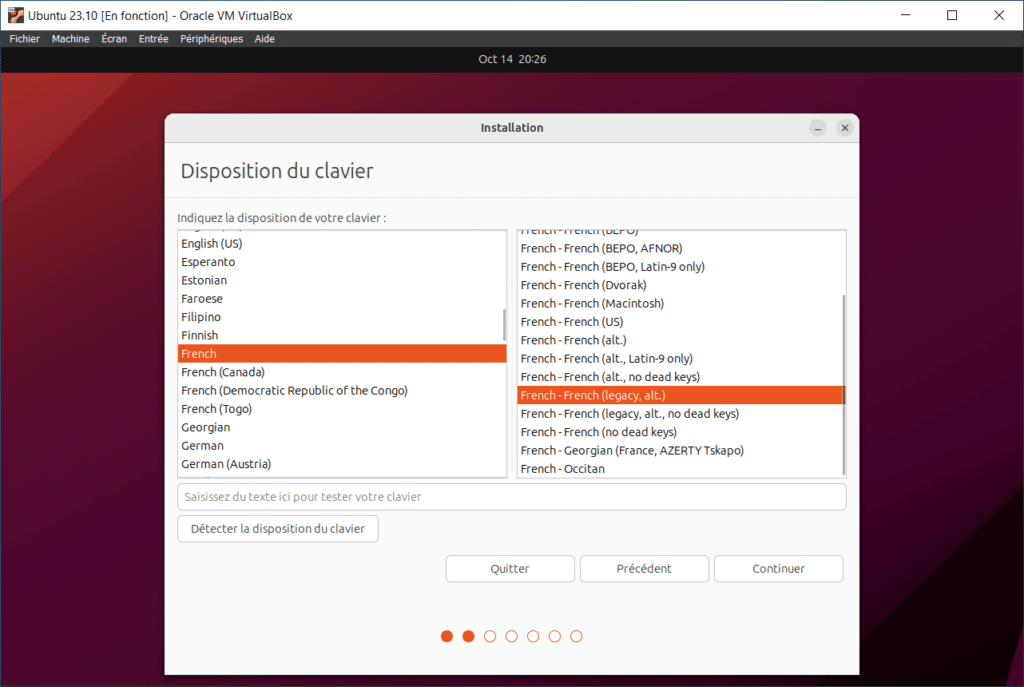
For installation type, choose “Normal installation” and consider enabling update downloads during installation and third-party software installation for graphics hardware and Wi-Fi for an optimal experience.
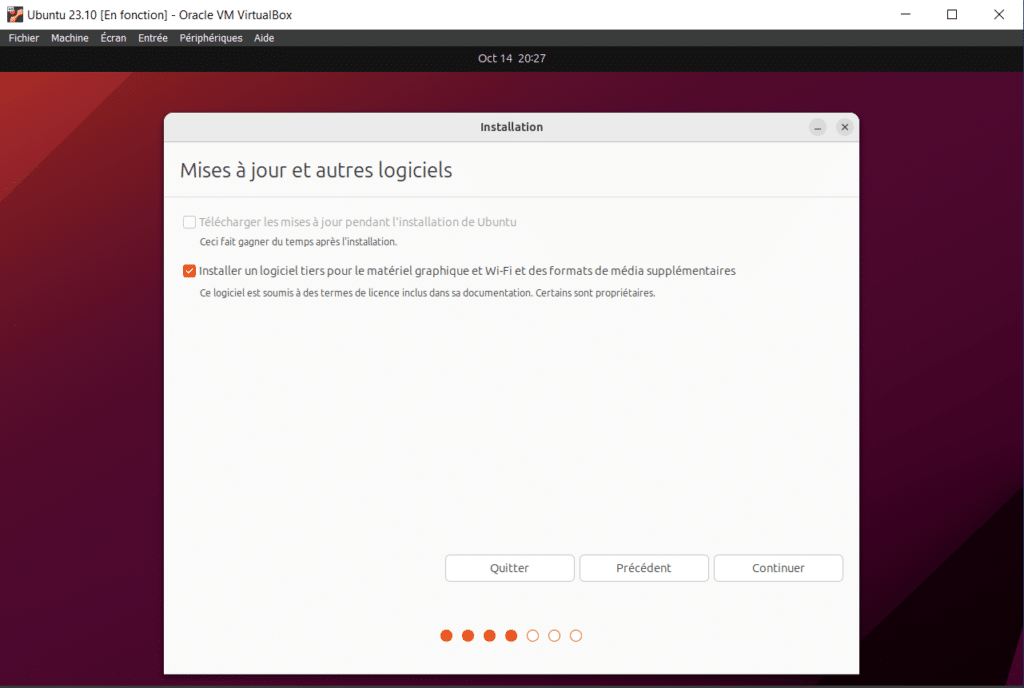
When you get to “Installation type”, choose “Erase disk and install Ubuntu” for a clean installation. Since it’s a virtual machine, you don’t have to worry about losing data. Click on “Install now” and confirm that you wish to write the changes to disk.
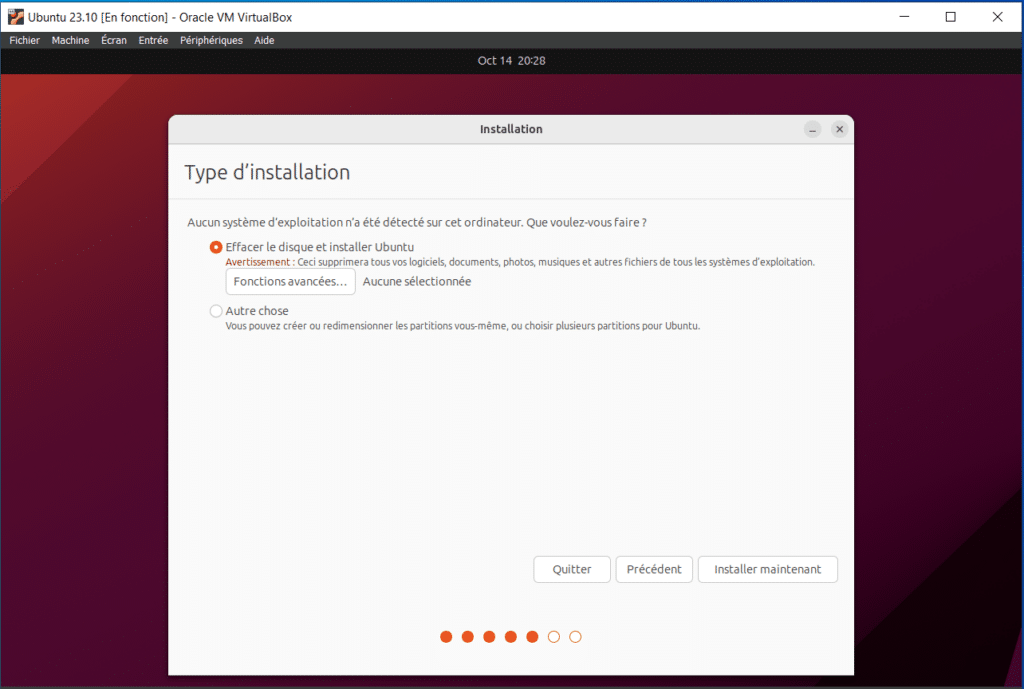
Then continue…
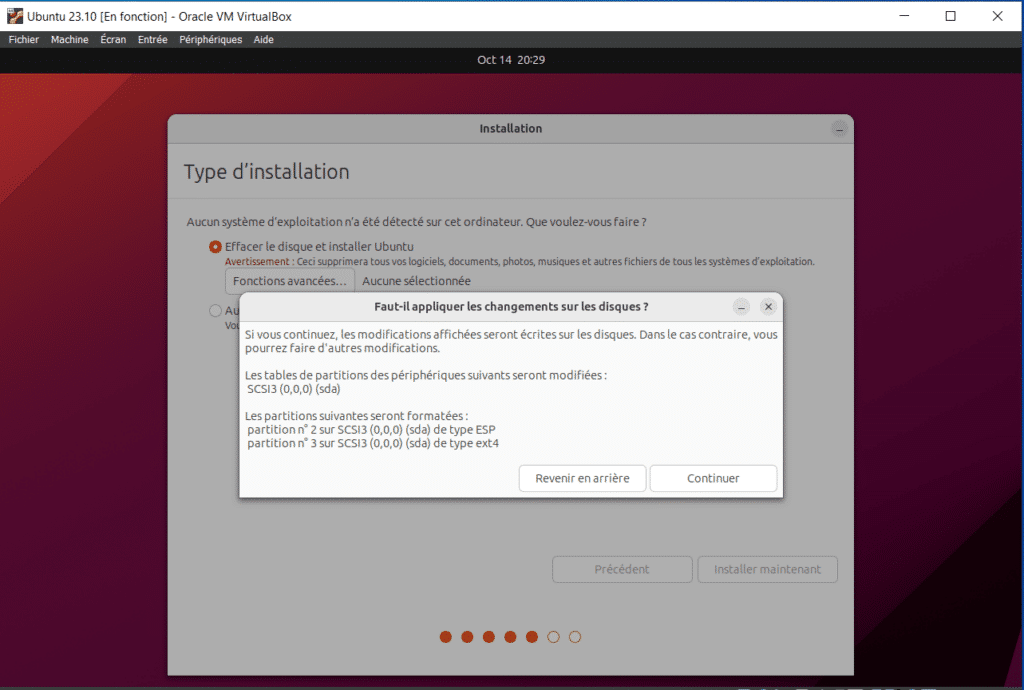
Select your time zone on the map or use the search bar to find your location.
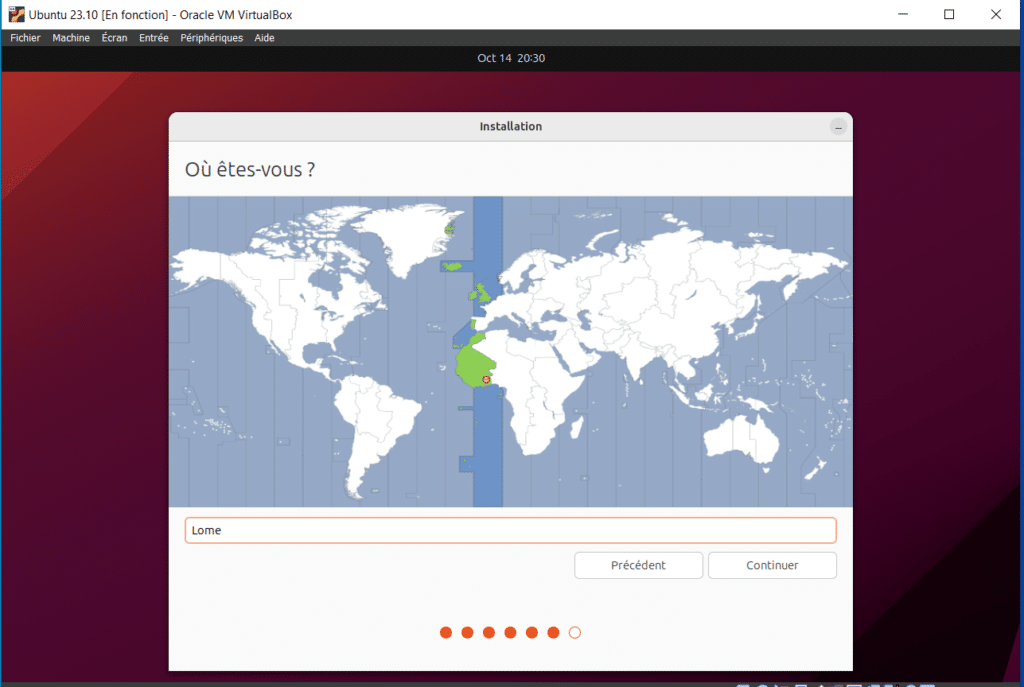
Enter your details :
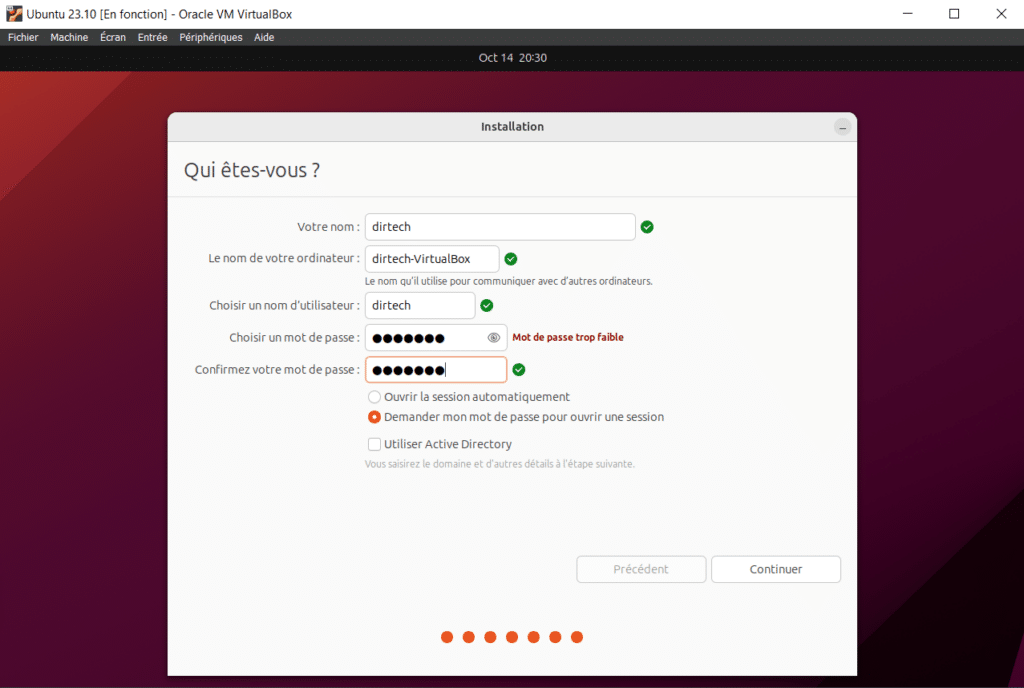
The installer copies the necessary files to the virtual machine. This may take a few minutes.
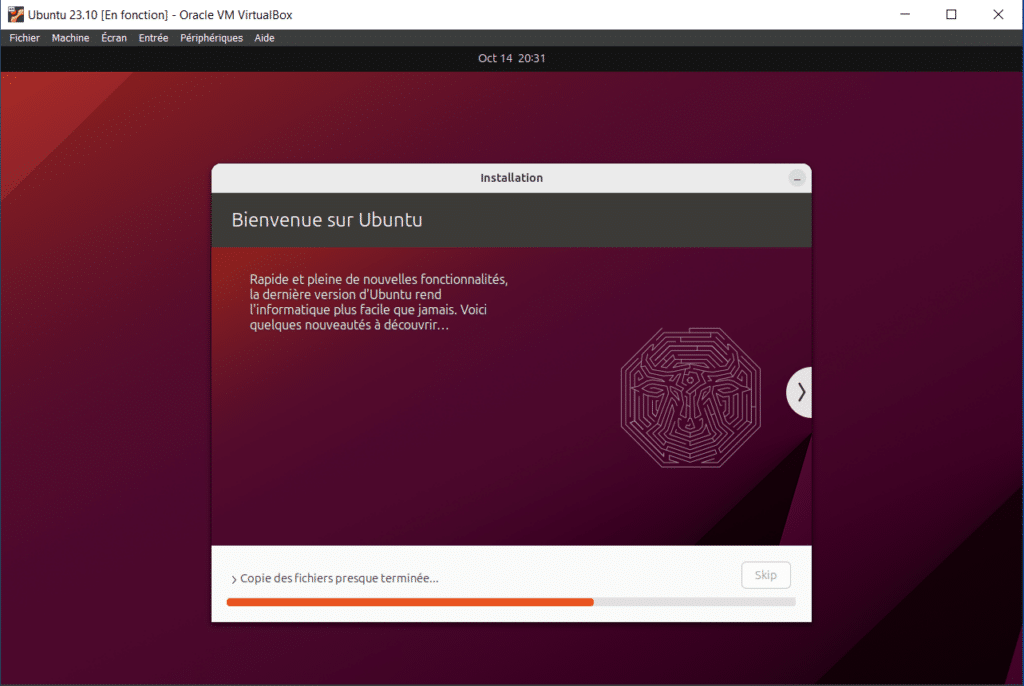
Once installation is complete, click on “Restart now”. If all has gone well, the virtual machine will restart and take you to the Ubuntu login screen.
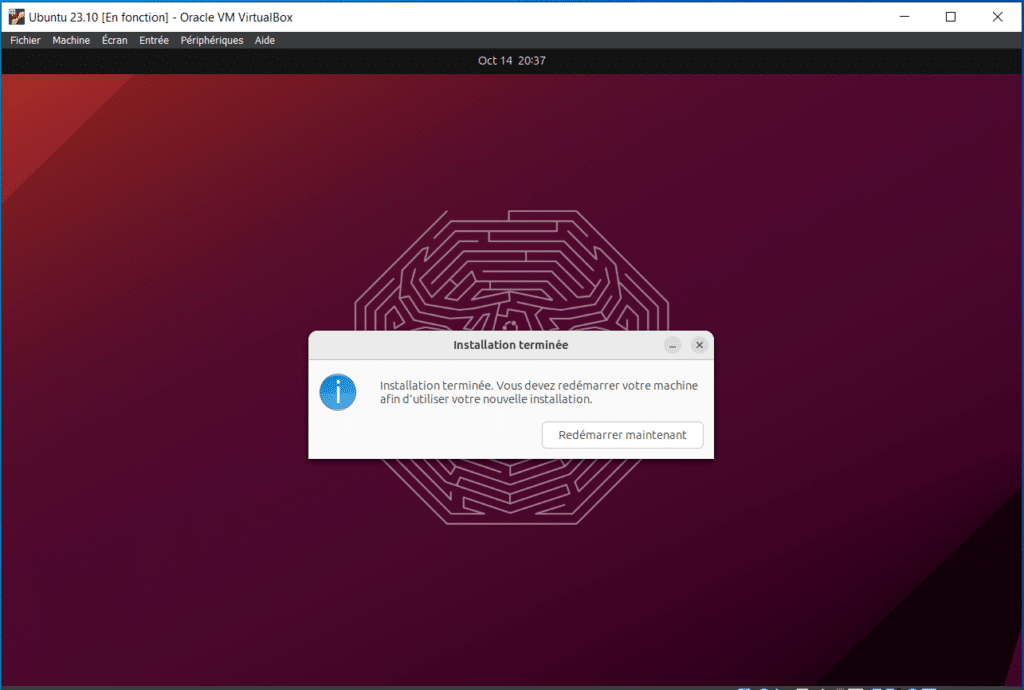
After reboot, don’t forget to eject the ISO image from the virtual disk by pressing Enter.
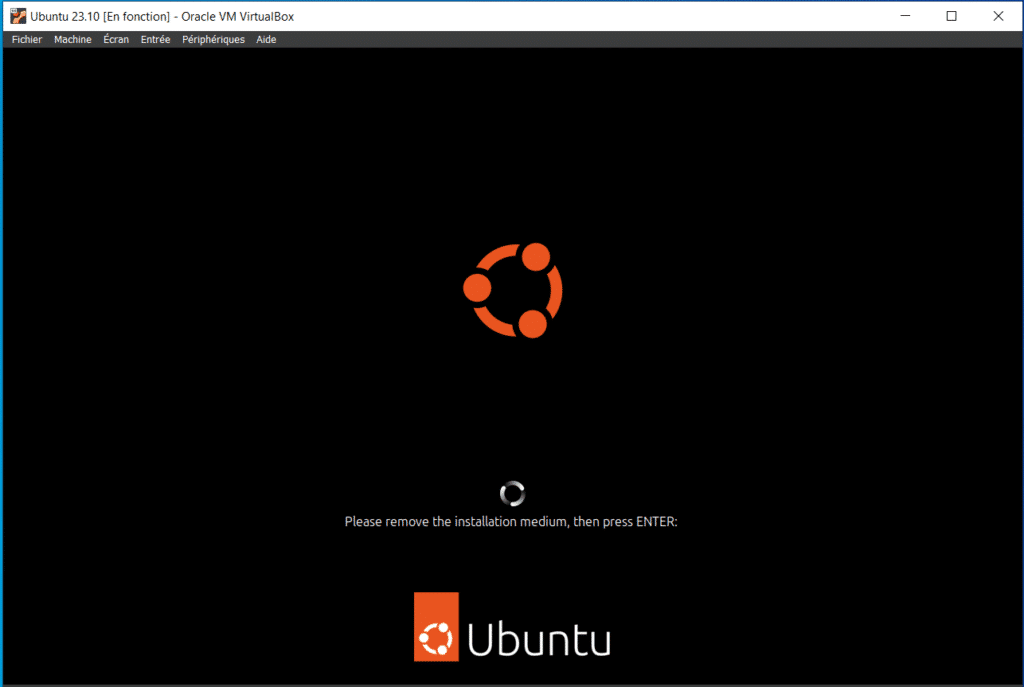
Log in using the user name and password you defined during installation.
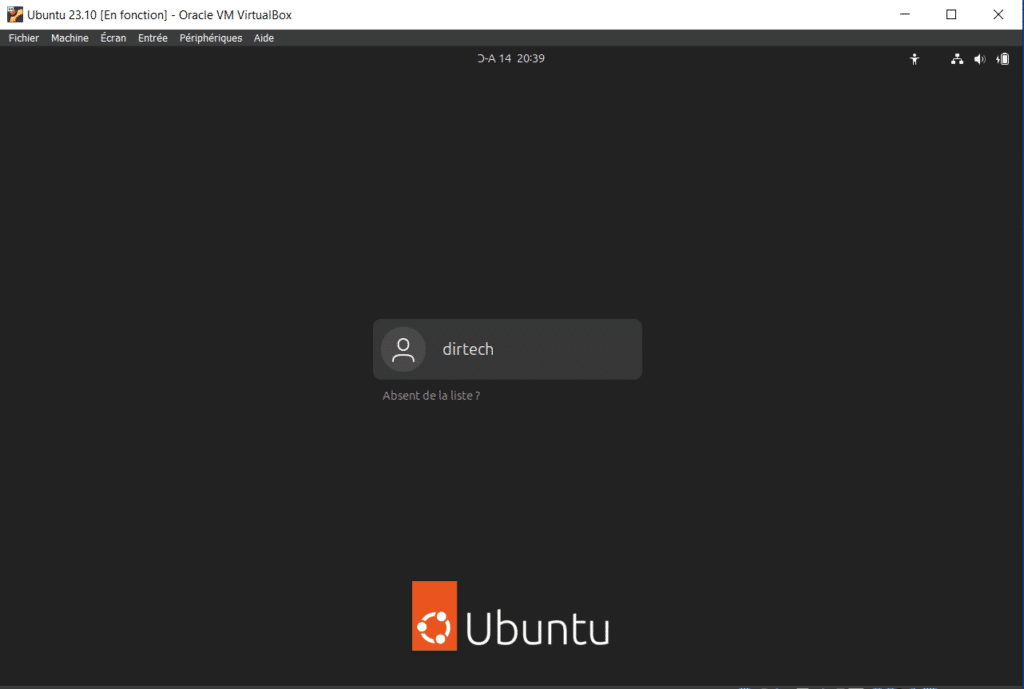
Congratulations! You now have a working installation of Ubuntu 23.10 in VirtualBox.
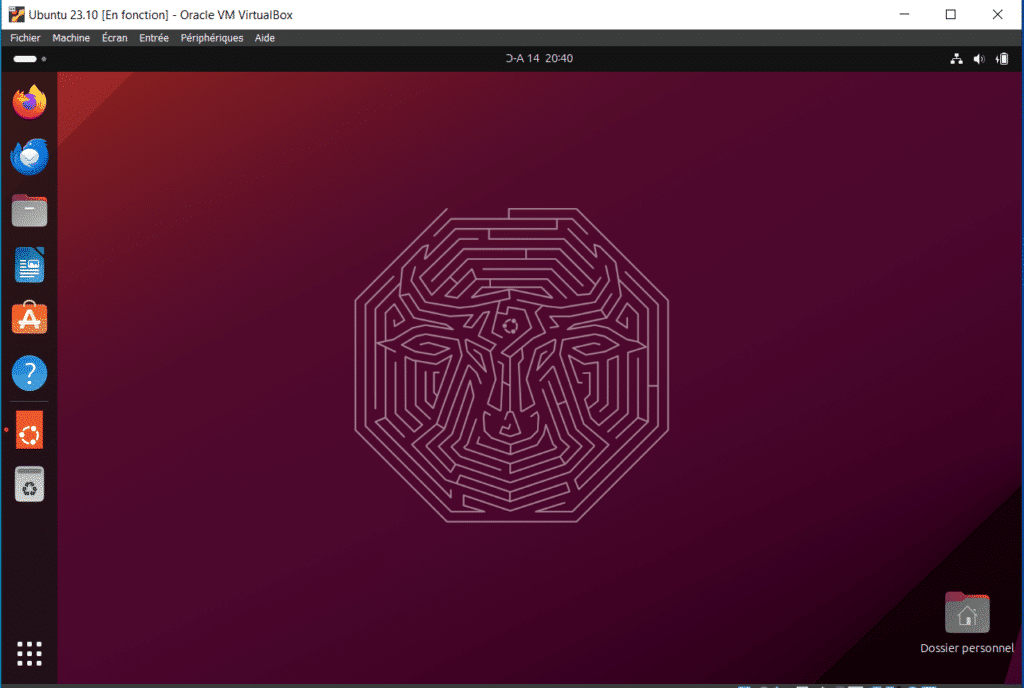
Conclusion
Installing Ubuntu 23.10 on VirtualBox allows us to discover and use the operating system without affecting our main system. Through these steps, you’ve not only learned how to install an OS in a virtual environment, but also how to create a secure, isolated space for your development or exploration projects.
For any other concerns or if you need assistance in other technology-related areas, please feel free to check out my Upwork profile.
FAQs
Why install Ubuntu 23.10 on VirtualBox?
This allows you to explore and test the operating system without making any changes to your main system, providing a safe environment for learning and development.
What are the minimum system requirements for installing Ubuntu 23.10 on VirtualBox?
A minimum of 2 GB RAM (ideally 4 GB or more), 25 GB disk space for Ubuntu, and a processor that supports virtualization.
Can I install other versions of Ubuntu or other Linux distributions in the same way?
Yes, the process of installing other versions of Ubuntu or other Linux distributions on VirtualBox would be quite similar.
What are the main differences between a direct and a virtual Ubuntu installation?
A virtual installation lets you run Ubuntu as a “virtual machine” inside your current operating system, while a direct installation replaces or coexists with the existing operating system.
How can I share files between my host system and the virtual machine?
You can use VirtualBox’s shared folder function or configure network access to transfer files between the host and the virtual machine.
What should I do if my virtual machine doesn’t start or displays errors during installation?
Make sure that the virtual machine parameters are correctly configured, that your ISO file is not corrupted, and that your host system has enough resources to allocate to the virtual machine. If the problem persists, consult the relevant forums or online guides. If you need assistance, please feel free to visit and engage me on my Upwork profile.
How can I improve the performance of my Ubuntu virtual machine on VirtualBox?
Make sure you allocate sufficient resources (such as RAM and CPU), install VirtualBox Guest Additions for better integration and improved graphics performance, and keep your Ubuntu system and VirtualBox up to date.



